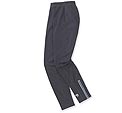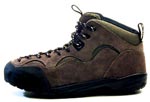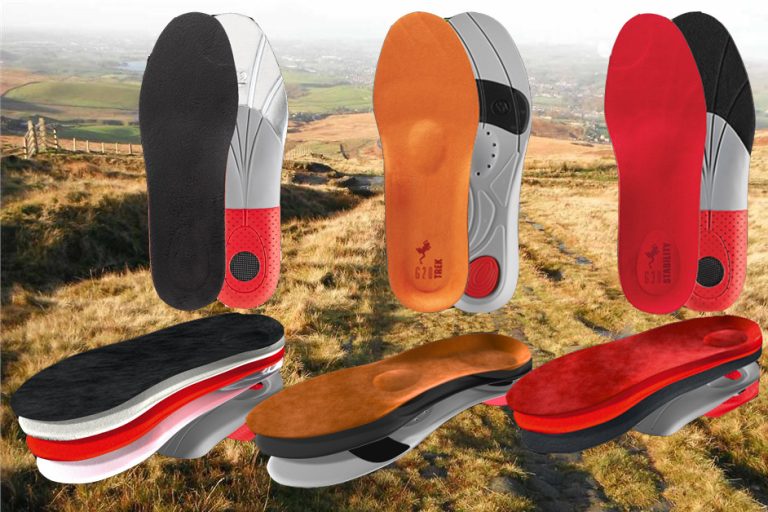My name’s Gear, Richard Gear – you have to think that my parents were having a laugh eh, but what the heck, nobody’s psychic. Anyhow…
The good news is that until you get onto serious grade 2 and 3 routes where you’ll need a rope, harness and a small rack of climbing protection, you can pretty much wear whatever you’d use for normal mountain walking.
There are two areas though, where scrambling puts an extra emphasis. One is footwear and the other is freedom of movement.
Clothing
You’ll need your normal mountain clothing including including waterproof and windproof shell garments. The only main difference is that freedom of movement is important. You may need to reach high for handholds or make high steps.
Look for trousers made from either a stretchy fabric like PowerStretch or Lycra or with an articulated knee that doesn’t restrict your movement. Some fleece pants, like Mountain Equipment’s Ultrafleece pants and salopettes have a stretch panel at the knee which works well.
Bear in mind that you’ll probably be moving slower than if you were walking, so you may need to dress warner than normal. |
Gloves
There’s no perfect solution for scrambling handwear. You’ll get the best feel and securityfrom climbing with bare hands, but in cooler weather it can be uncomfortable at best and painful at worst. There are some modern, very expensive technical climbing gloves that come close to a solution, but for most of us are overkill.
Thin windproof fleece gloves are ideal in terms of sensitivity, but even the ones with grippy materials on aren’t quite there. With sustained use on rock, most will wear through worryingly and expensively fast. One answer is to trash your gloves, then snip the finger tips off for scrambling use. You’ll need to seal the ends of the fingers in some way and you’ll get a reasonable compromise between warmth and performance on the rock.
You could, of course, buy some fingerless woollen gloves for the same effect, or even a pair of mitts with fold over ends.
Footwear
There’s no ‘right answer’ to the footwear question – it’s a matter of personal preference and, on easier routes, a competent scrambler can get away with pretty much anything within reason, though I don’t recommend stilettoes… Here’s a run down of the options with the pros and cons:
2/3 Season Walking Boots Most bendy walking boots will cope just fine with scrambling and have the advantage of being comfortable for the walk-in and out. The main limitation is lateral stiffness. To edge on holds they need to have a degree of torsional rigidity or you’ll have to resort to more ingenious methods. On easier scrambles – most grade ones – this won’t matter since the holds are so big. On 2s and 3s it’s more of a problem.
Rigid Mountain Boots 4-season or alpine mountaineering boots with a fully rigid sole should give you no problems with edging and even toeing on even very small holds and ledges. They tend though to be heavier and less delicate than lighter footwear and can give disconcertingly little fee for the rock. The modern, lightweight alpine boot, like Scarpa’s Freney, is a good compromise. Tend not to be great for smearing and not as comfortable as walking boots for approaches.
Approach Shoes Come in two varieties, the general multi-activity shoe and stickier versions designed for climbing use and featuring sticky rubber like those from Five.Ten. General purpose shoes tend to have decent lateral rigidity these days and apart from the lack of ankle protection, which means they’re not always ideal for foot jams in rough cracks, perform pretty much like walking boots.
Shoes using genuinely sticky rubber will perform more like a rock shoe with better smearing ability than boots and, if fitted closely, good sensitivity on the rock. Great for slabbier route which call for smearing and well up to easier stuff too.
Specialist
Scrambling / Via Ferrata Boots Not a lot of these about, the Scarpa Mescalito being probably the best known with a stiff mid-sole and sticky rubber where it counts, Garmont’s new Ferrata boot, which also comes in a fully stiff shoe version, also looks to have come from the same mould and looks like a modern version of the Kletterschue. These are ideal for harder scramblers and cheating on grade ones, they’ll also handle long, mid-grade climbing routes and are comfortable for walking as well. Disadvantages? The stickier the rubber, the more likely it is to wear rapidly with use which is presumably why Scarpa replaced their original full Megabite rubber sole with an updated version which has a sticky toes section but otherwise standard rubber. The best solution but do you scramble often and hard enough to justify the outlay?
Flip Flops Frequently sighted on classic routes like Crib Goch and Striding Edge during the summer season, the classic flip flop slip-on sandal is ideal for hard rock work and psyching out fellow scramblers. Not particularly good at either edging or smearing, it makes up for these shortcomnings and others with superior performance on the beach. Highly rec. er, not. |
Packs for scrambling

There’s no such thing as a specialist scrambling sac, but a small day sac should do fine, unless you’re going to be hauling ropes and gear around. The three main points are to make sure it’s narrow enough not to prevent you from squeezing through small gaps, ideally it should have an effective compression system for stability and, for the same reason, a waist strap to stop it swinging around.
If, on harder routes, you intend to climb without a sac and haul it up after you, you’ll need to look at one of the more abrasion resistant sacs on the market, and, of course make sure it has a haul loop. The three brands with a good reputation for toughness when dragged over rough rock are MacPac, Mountain Equipment and niche Sheffield brand Pod.
Packs for scrambling
One of the reasons scrambling is disproportionately dangerous is that few scramblers wear helmets. It’s a personal choice of course, but on harder routes and in mountain situations where there’s a danger of falling rock or climbers. A personal choice, but definitely worth considering and pretty much essential on harder mountain scrambles. |
When the going gets technical
On harder scrambles or even on easier routes in poor conditions or with beginners, you may need to pack a rope and a basic rack plus harness. I’d go for a light half rope – you not going to be falling off are you? – and use it doubled if you hit a particularly stiff section that you need to pitch.
A light alpine harness is ideal, as you shouldn’t be swinging around in it and a pared down rack with a few rocks, some hexes and a selection of long slings for lassooing spikes should be adequate for most scrambles.
Miscellaneous stuff
• If you’re soloing but may want to haul a sac up after you, a length of accessory cord is much lighter but just as effective as a rope. Don’t forget to clip the pack in first though. Thanks to Mike D for that one.
• If you think you might need a rope for just a short step, consider carrying a cut down half rope to save weight.
• Try to use a non-greasy sun cream, there’s nowt worse than Ambre Solaire and sweaty fingers on hot rock…
• Erm. If you have any other suggestions why not add them to this forum thread. I don’t know everything you know… |









